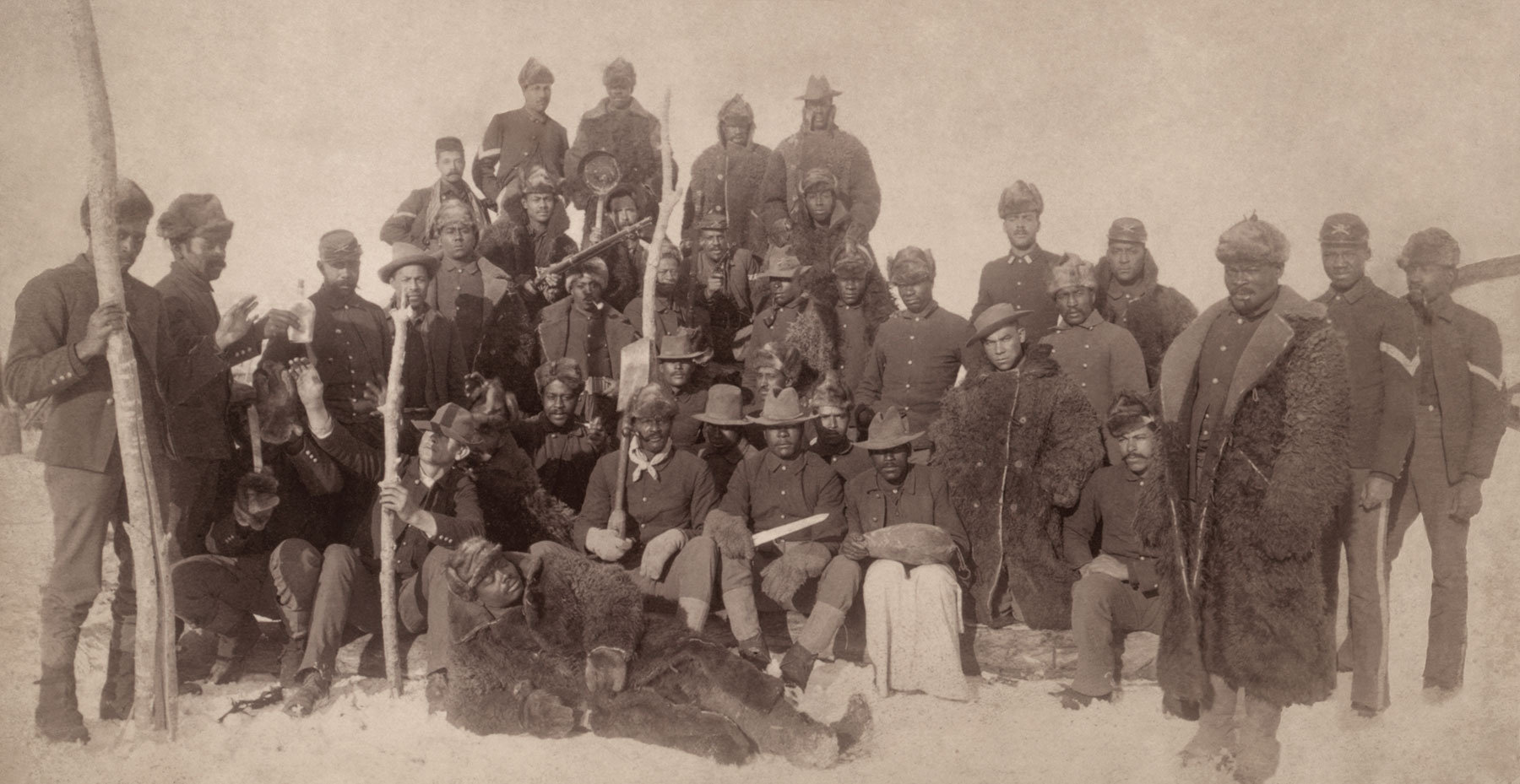
Texas Trailblazers
Buffalo Soldiers
The Army needed rebuilding after the casualties of the Civil War. Though Black soldiers had fought courageously, they weren’t allowed to serve in the military in peacetime. In 1866, the Army Reorganization Act authorized the formation of two cavalry and four infantry regiments “which shall be composed of colored men.”
The segregated infantry regiments were combined into two; the soldiers went on to serve in more than 100 engagements, becoming known as Buffalo Soldiers. (Some say the name was meant to honor their fighting bravery and fierceness; others claimed that Native Americans thought the soldiers’ hair resembled the native bison fur.)
Buffalo Soldier regiments were stationed at forts across Texas, where they protected frontier settlements, mapped the Texas plains, constructed and repaired fort structures, strung telegraph lines and escorted wagon trains, stagecoaches, railroad trains and cattle herds.
The Buffalo Soldier troops served with distinction in the Spanish-American and Philippine wars, the U.S.-Mexico border wars and both world wars but faced racial discrimination everywhere.
The Buffalo Soldiers cast of characters includes the first Black graduate of West Point, 23 Medal of Honor recipients and one woman disguised as a man.

Above: Buffalo Soldier Henry Ossian Flipper. Top: Buffalo Soldiers of the 25th Infantry Regiment in 1890.
Henry Ossian Flipper knew that his path at West Point would not be easy when he was appointed in 1873. In his memoir, The Colored Cadet at West Point, he writes: “With my mind full of the horrors of the treatment of all former cadets of color, and the dread of inevitable ostracism, I approached tremblingly yet confidently.”
Despite cruel treatment, Flipper became the first Black West Point graduate and the first commissioned Black officer in 1877. He was a Buffalo Soldier in Oklahoma, later assigned to Texas’ Fort Davis. Accused of embezzlement, he proclaimed his innocence but was discharged, though eventually pardoned in 1999.
Cathay Williams, a Missouri slave, enlisted in the Army as William Cathay in 1866; her true gender was not discovered for two years. Following an honorable discharge, Williams joined up with the Buffalo Soldiers, the only female to do so.
By 1951, all Buffalo Soldiers were integrated into other regiments. The Texas Parks and Wildlife Department’s Buffalo Soldiers heritage and outreach program brings this history to life with stories, costumes and tools at events throughout the year, especially in July, Buffalo Soldiers Month. Find out more at tpwd.texas.gov/buffalo-soldiers.
» Like this story? If you enjoy reading articles like this, subscribe to Texas Parks & Wildlife magazine.

